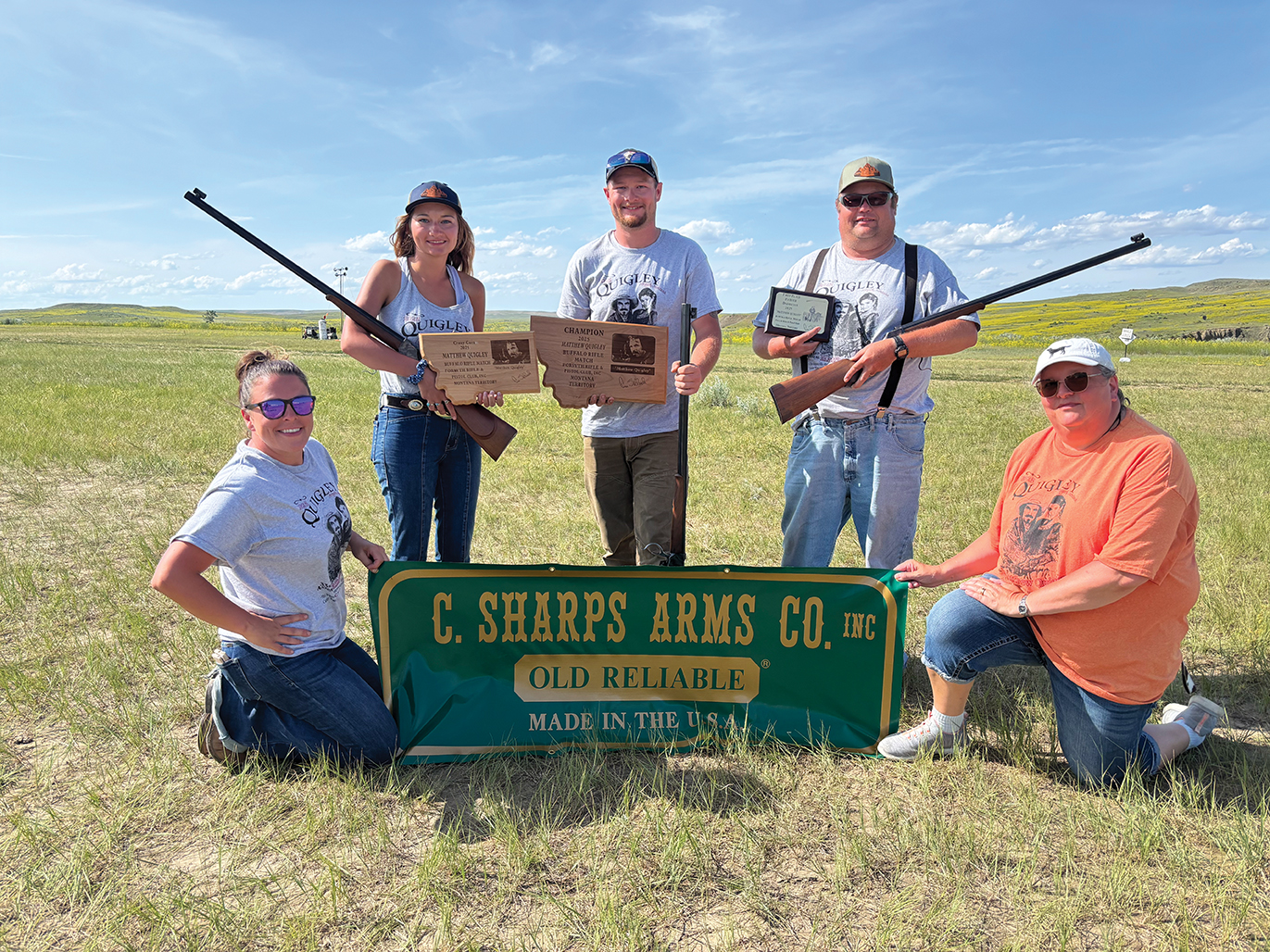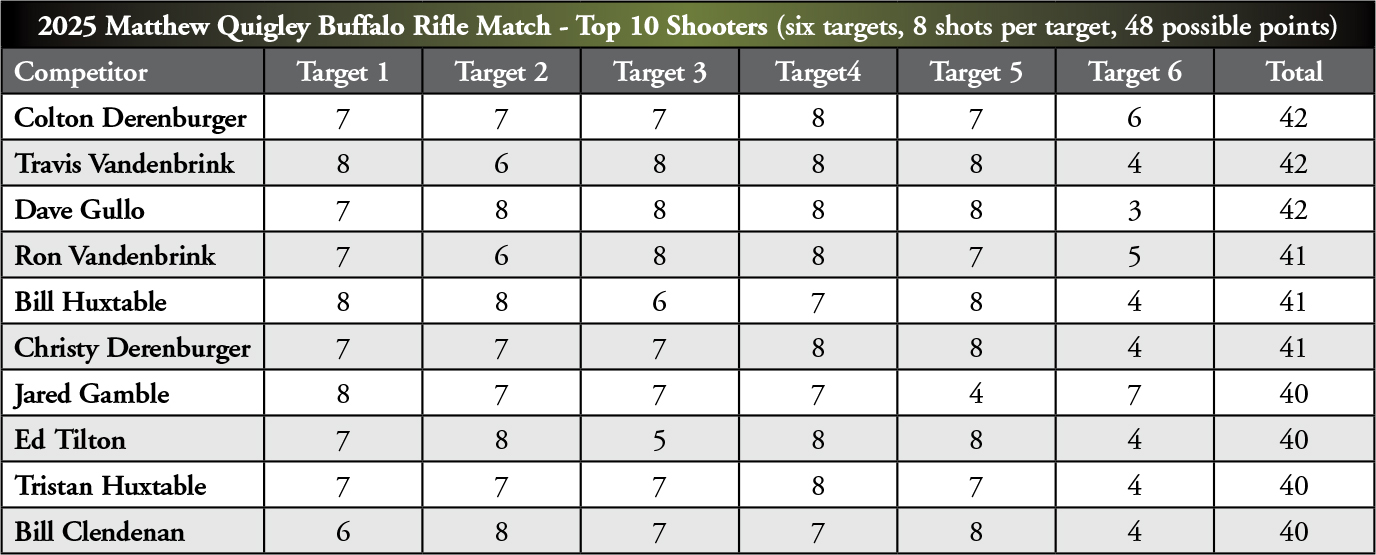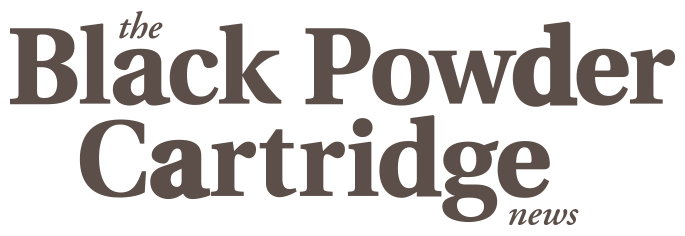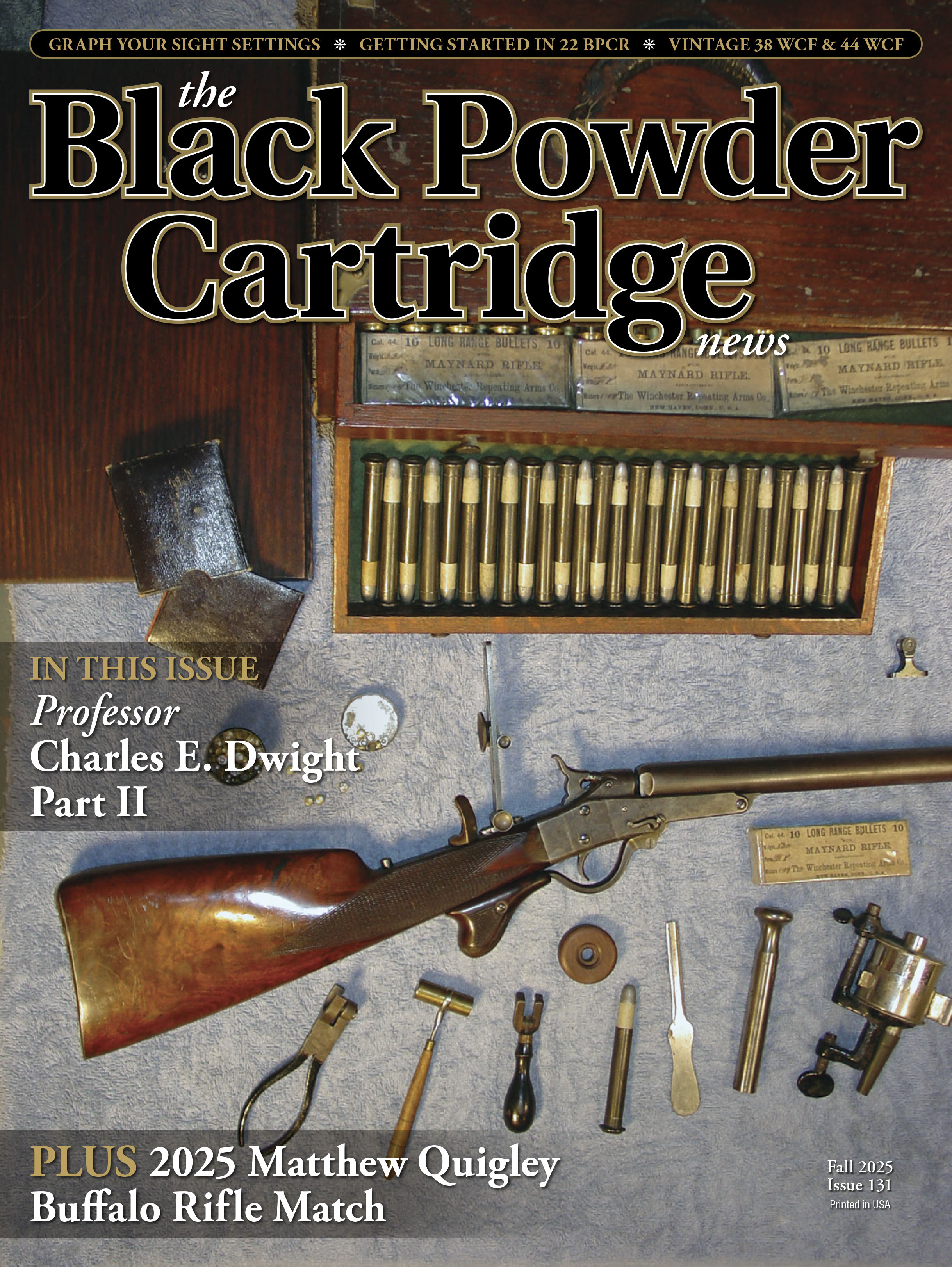Quigley 2025
My Best So Far
feature By: Mike Nesbitt | September, 25
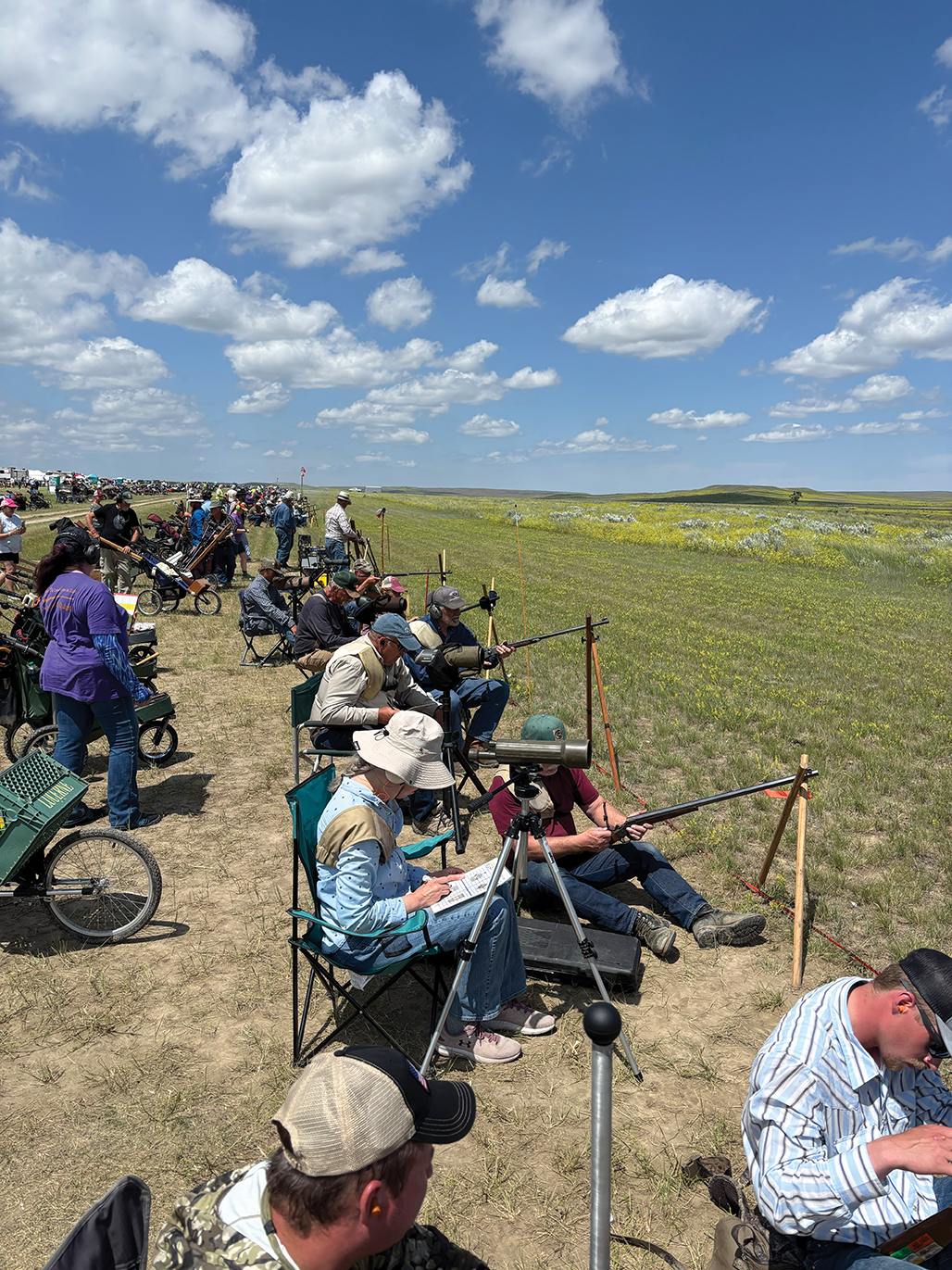
However, this is the story about Quigley 2025, not just a report about my shooting. This match was the 33rd time that shooters had gathered from all around the world, to test their skills on the targets beyond the Quigley firing line. Over the years I have got to know a few of them and before the match started I met Gavin Dignam, who hails from Australia.
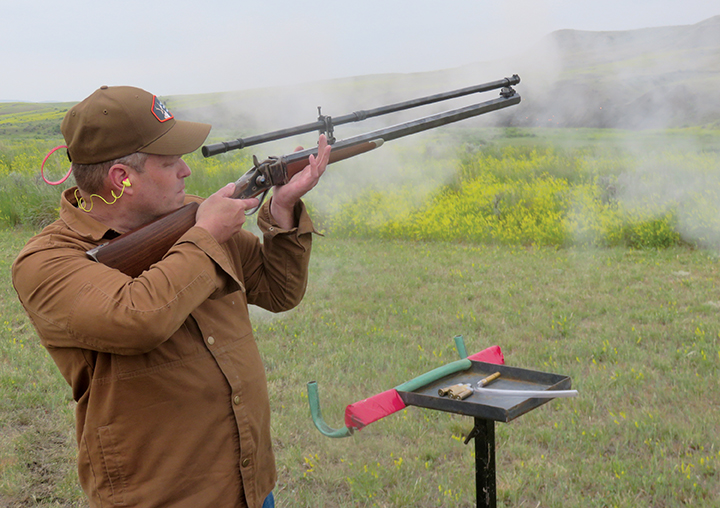
However, that doesn’t include the practice shots that can be taken before the match starts on Saturday morning. Shooters who arrive at “Quigleyville” (as the camp is called), and register for the match are allowed to practice as much as they want. It is during that time that the story about Quigley - 2025, really begins.
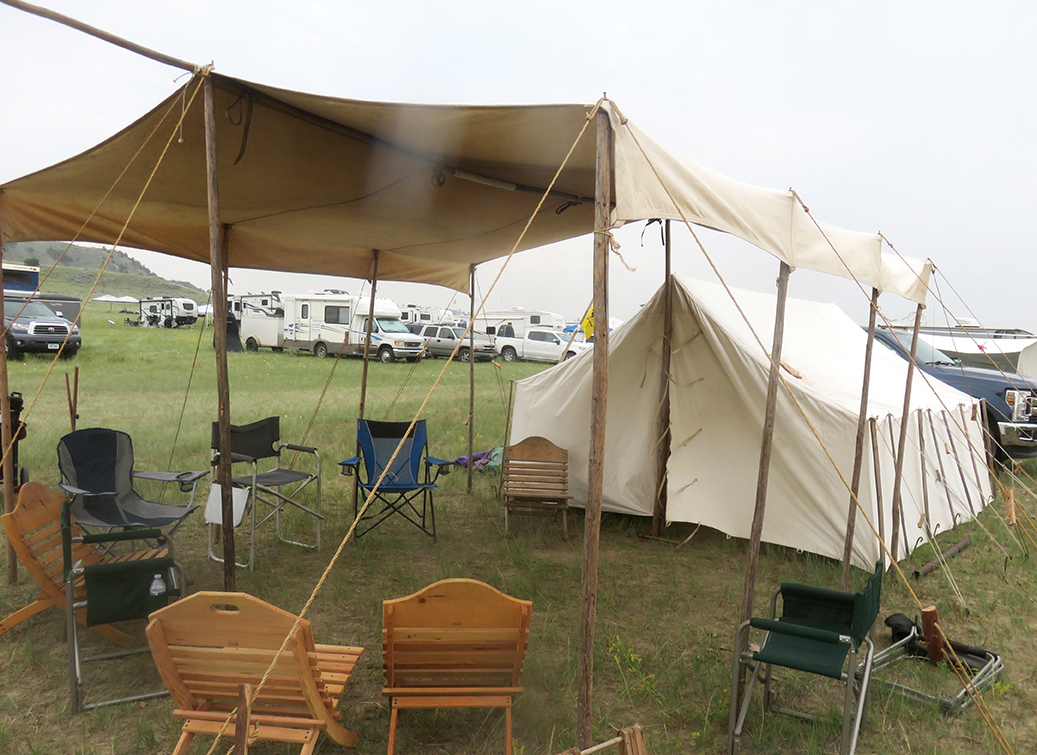
At the registration tent, I pre-registered all of those “Runners” who were participating, just to be sure that we would be able to shoot in the same group. By pre-registering, means that their entry fee was paid and their names were listed in the proper group. However, they still have to sign their own registration forms after getting to camp.
The rifle I selected to use this year was the 45-90 Bridgeport Model by C. Sharps Arms that I purchased four years ago. The rifle was designed and ordered for use in the Quigley match but teething problems and other issues got in the way. For one thing, I had to learn to shoot left-handed because my right eye was the main problem, which slowed me down a bit. Last year, I shot left-handed but for that doin’s, I used “Moonbeam,” my C. Sharps Arms Hartford in 50-70 caliber. Mike Moran and I both used our 50-70s back then and he used his again this year.


In addition to my 45-90, I also had my good 50-70 along. You cannot travel 1,000 miles to a rifle match without bringing a “back-up rifle” just in case something goes wrong. Of course, thankfully nothing went wrong, simply because I did have a back-up rifle with me! I brought along both greasers and paper patch ammunition for the 50-70.
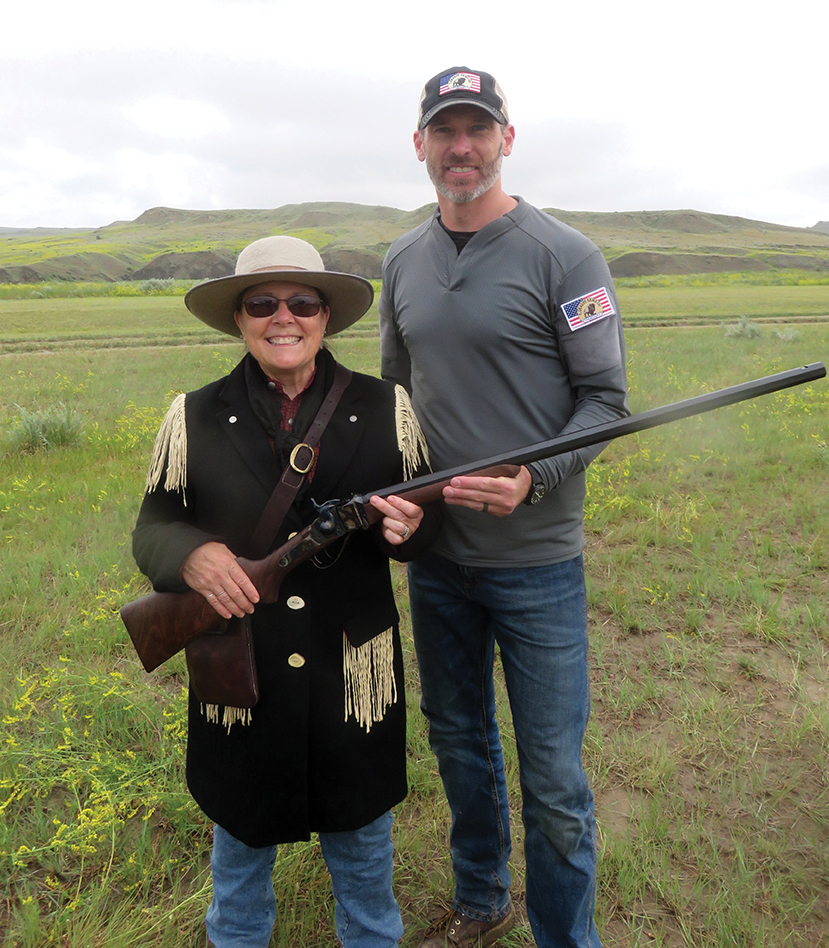
Mike Moran and his partner, Larry Litten, got to camp the next day, as did Jerry Mayo and Bob DeLisle. Scott Sibley rolled in from Wyoming about the same time and Phil Wiebe snuck into camp to set his little tent up just behind mine. With everybody present, we had a good camp with room for more, including visitors who could enjoy our hospitality.
Once all of our registrations were complete, we gathered our rifles and ammo, then headed to the firing line for practice. I got all my sight settings for almost all of the distances and once those settings were determined, I was ready for the match to begin. Not so with Allen, as he hadn’t decided on which of his rifles to use, finally settling on using his C. Sharps Arms Model 1875 in 45-70 caliber. Larry Litten, was using another 45-70 Sharps and his, like my 45-90, was sighted with a Montana Vintage Arms scope. Scott Sibley used a 45-90 that was somewhat like mine but with a longer and heavier barrel, which weighs (including the full-length MVA scope) over 17 pounds. We certainly had a variety of fine rifles.
Mark Davis was considering purchasing another Sharps, and I recommended a 50-70 that C. Sharps Arms was bringing to Vendors Row. When C. Sharps Arms arrived and opened their doors to gun-hungry customers, Mark and “Krazy Kelle” went to take a look. As things turned out, Mark didn’t get that 50-70, but Kelle did get a beautiful pistol-gripped Bridgeport in 45-70 caliber.
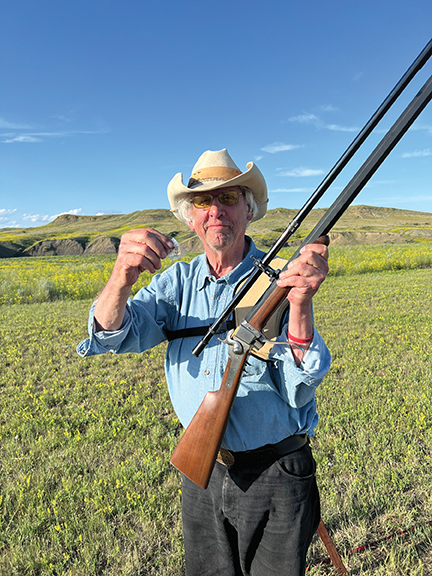
The Quigley match is fired with squads of six people shooting at a time, while their partners are spotting their shots. After they’ve shot, the next squad takes their turn shooting and when that squad shoots, our second squad was getting ready. Our first group made up squad Number Five and our second group of shooters filled up squad Number Seven. That way our two squads did their shooting on the same side and if necessary, we could even share equipment. There are 12 shooting groups and this is going on in each group, all at the same time. This is how they get so many shooters through the course as fast as they do; timing is a necessity.
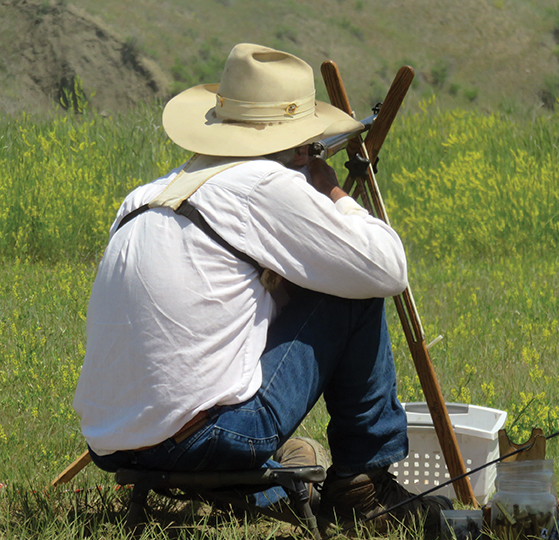
My first shot at the Octagon was a miss, right over the top. The sight settings gathered just a day before were too high, as if recorded while shooting into a head wind and now we had a tail wind. To be sure, I fired one more shot and that was also a miss. Then I made a sight adjustment of about two minutes and began collecting hits.
We finished with the Octagon before the group ahead of us was finished. During that wait time, I was able to watch Dave Gullo shoot on the 530-yard “Postage Stamp.” Dave was shooting his Ballard in 44-90 Remington Straight and was doing a fine job too. I find Dave to be a true inspiration, as well as a good friend. He kept on making hits until he finished on that target, earning an Eight-Straight pin for his eight consecutive shots.
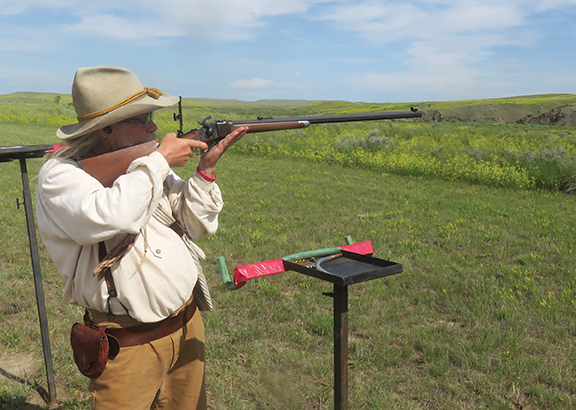
Next for our group was the Diamond at 405 yards. On this target my score fell back to five hits, which gave me 17 hits for half of the course. However, better things were to come.
Our group’s last target for Saturday was the second and smaller of the Postage Stamps; target Number Five, the little 22 by 28-inch rectangle sitting out at 417 yards. This year, I managed to hit that target with my 45-90 on every shot and received my very first Eight-Straight pin. I finished the day with 25 hits, which certainly beat my old record of 23 hits that I did some years ago with my iron-sighted 44-90 Sharps.
We still had two targets left to shoot and the Sunday morning wind made that tough. At the Bucket – out at 350 yards and shot offhand – the wind would easily blow me off course and keeping a steady hold was basically impossible. I got just one hit on the Bucket and that was followed by the long hike back to Target Number One – the Buffalo at 805 yards. This target is shot from the sitting position while using cross-sticks, so it is an easier hold. However, at nearly half of a mile, the winds had much more time to steer the bullets off of the target. On the Buffalo, I did manage three hits, which gave me a total for the match of 29 hits, my best ever score at Quigley.
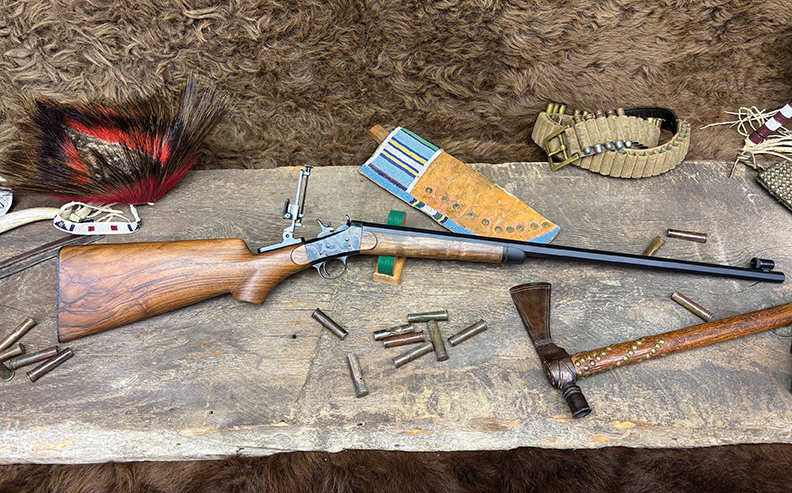
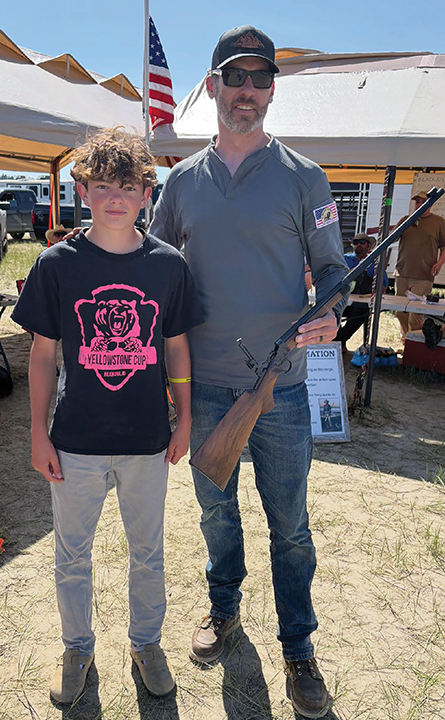
Of course, the Quigley plaques are the prized trophies really worth shooting for. This year the Derenburger family received quite a number of them. The top shooter was Colton Derenburger, with 42 good hits. Actually, the top three shooters all scored 42 hits but Colton had the most hits on the Bucket and that difficult target is the match tiebreaker. The top shooting lady was Christy Derenburger, with 41 hits, placing sixth in the overall scoring. The top Father-Daughter shooting team went to Pat and Christy Derenburger – now that’s a shootin’ family!
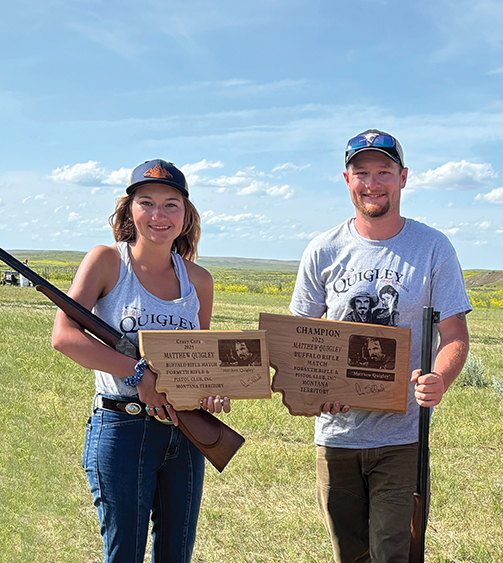
Fortunately, I was able to meet some of the people who helped put on the Quigley Match this year. The Quigley Committee consisted of Patrick Menahan, Brenda Menahan, Lauryn Dannon, Rick Smith, and Shane Kraft. They did an excellent job with the help from several other people. One that I kept running into was Deith Allies who was mainly helping out on the firing line. Of course, I met some of the people at the registration desk and they were, Lauryn Dannon, Misty Sleaford, Maxine Heckmaster, Cheryl Hesser, and Brenda Menaha. Mariska Fulton was the scorekeeper for our group and all scorekeepers should be thanked for the time they put in during the match. It is easy to see how the scorekeepers are far busier than the shooters. Another few members of the team need to be mentioned and they are the target painters. It is not an easy job keeping those targets looking good and fresh for the best aiming. Mike Buchholz, one of the prominent vendors, was in charge of the vendor’s placements. All of them, the named and un-named, did a tremendous job keeping the match running.
